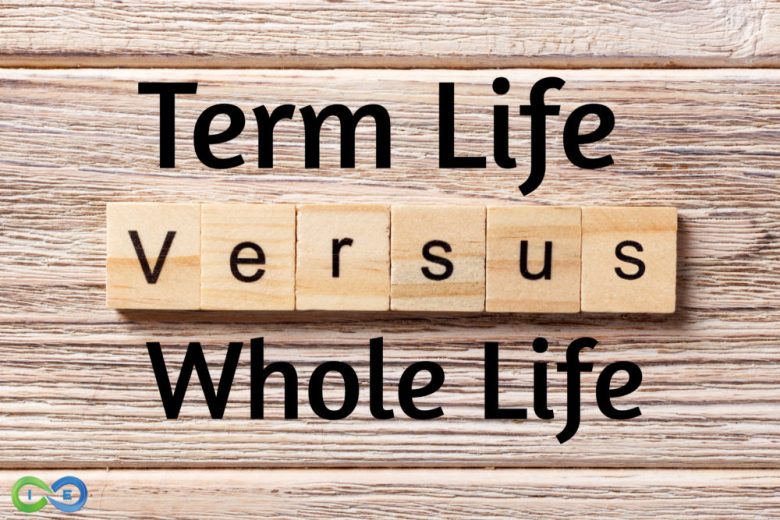Term life insurance provides economical protection over an agreed-upon time period; whole life policies have savings elements which accumulate cash value over time.
A whole life policy can provide peace of mind and financial security for both you and your loved ones even after you’re gone, helping meet financial goals and obligations while meeting future obligations.
Cost
Term life insurance tends to be less costly than whole life due to fixed premiums that do not increase over your life span. A portion of each monthly payment goes toward covering the costs associated with the policy while another part goes into an investment fund that will grow at a guaranteed rate, providing your loved ones with an ample death benefit upon your passing. However, taking out loans against this cash value account or not paying back debt could reduce its size significantly and therefore affect its death benefit value.
On the other hand, whole life policies usually carry higher premiums as they’re intended to cover your entire lifetime. They also build cash value components – an account where interest accumulates over time – which provide another form of savings account that allows for long-term growth potential. Furthermore, whole life policies offer flexible conversion to permanent policies at reduced premium rates should the need arise.
People seeking to cover funeral and long-term care costs as well as other financial obligations should strongly consider whole life insurance. It can also be useful if starting their own business or have family members with special needs requiring ongoing support services; and those who have maxed out tax-advantaged retirement accounts and want an extra safety net.
Coverage
While term life insurance provides coverage for only a specified timeframe, whole life policies provide permanent protection throughout your lifetime. They build cash value that can help pay premiums or be withdrawn upon retirement. While more costly than term policies, whole life policies provide guaranteed protection and death benefits that will last your whole lifetime.
Whole life policies can be more complex than term policies, requiring medical exams and health exams for approval, as well as answering extensive health questions. Furthermore, many whole life policies allow their owners to earn dividends that may increase your death benefit or cash value – but these earnings won’t be taxed until withdrawn from an account.
Term life insurance can provide temporary protection for families during child-rearing years or to cover debts such as mortgage payments. Young families frequently opt for this affordable and hassle-free form of coverage.
Whole life insurance provides lifelong protection to families that need lifelong protection, with low initial costs that could save families money over time and an accruing cash value component that grows with time. Furthermore, whole life can ensure your loved ones will remain covered should something unexpected happen to you – all while providing peace of mind should an unexpected death occur.
Taxes
When shopping for life insurance, there are various policies available to you. Your choice will ultimately depend on your financial goals and coverage needs; term and whole life policies are two popular options that each have their own advantages and drawbacks.
Term life insurance can be less expensive than whole life policies, with its premium paid for a specific timeframe and any payments due being distributed according to certain provisions. When death occurs during that period, however, your beneficiary would receive the death benefit (subject to certain restrictions). Whole life policies tend to cost more but provide lifetime coverage while building cash value over time as well as giving policyholders the ability to withdraw or borrow against their cash value accumulations.
Life insurance policies come with various tax repercussions that may significantly increase costs. In certain states, for instance, sales taxes on premiums must be paid. You may also owe taxes on any interest generated from a whole life policy; however, death benefits and cash values tend to remain tax-free.
Contact Aflac today and discover more about the cost of both types of life insurance by speaking to them about what their best plan for you would be, depending on your needs and budget. Term life and whole life policies offer protection for shorter timeframes alike.
Cash value
Before choosing the type of life insurance best suited to you, take into account both your budget and long-term financial goals. Term life offers cost-effective protection over an agreed upon term period; whole life provides coverage until death while building cash value over time; for high net worth individuals looking to leave behind financial legacies, whole life may be an ideal solution.
Whole life insurance’s primary advantage is lifetime coverage, meaning your beneficiaries will still receive death benefits even after you’re gone. Premium payments also go toward building cash value which can later be withdrawn or borrowed against. There may be tax implications involved so before making any decisions please seek professional advice first.
Whole life insurance provides another key advantage: its level premium remains constant over its entire duration, making budgeting for long-term goals simpler while simultaneously relieving stress when it comes to planning your family’s financial future.
Many whole life insurance policies also feature dividends, which represent a portion of their company’s profit, which can be used to reduce premiums or boost death benefits. Since surrender charges may apply when purchasing such policies, it’s wise to consult a financial advisor first before purchasing one.



